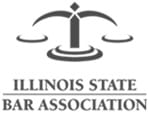There are plenty of stats suggesting that teen drivers in Illinois are more likely to be involved in accidents involving personal injuries. This is why efforts are often made to help motorists under the age of 21 understand the consequences of risky driving behaviors. Results from a university study suggest that supplemental drivers’ education programs that include realistic experiences like emergency room tours and visits to intensive care units increase awareness of the dangers of risky driving.
While results from the study are encouraging, a two-month follow-up failed to show any conclusive evidence as to whether or not the program had a significant impact on modifying behaviors behind the wheel. The study focused on a supplemental risk reduction program that included ER, ICU and morgue visits as well as a test covering topics such as DUI and distracted driving.
On a questionnaire filled out at the start of the program, teen participants identified their most risky behaviors from the previous 30 days — texting and using a phone, drinking and driving and riding in a car with a driver who was intoxicated were among the top responses. They were also asked to rank behaviors such as speeding and not wearing a seat belt in order from most to least risky. The biggest change at the end of the class was an added awareness of speeding dangers and peer influence. The findings suggest reality-based programs could benefit younger drivers.
Another encouraging result from the study is that parents of the teen participants were more likely to establish additional driving rules and talk to their kids about the dangers of risky driving following participation in the program. When accidents do occur, a personal injury attorney can take steps identifying negligent parties and negotiating injury settlements. If appropriate, further legal action may be pursued to secure compensation for medical expenses, lost wages and pain and suffering.










